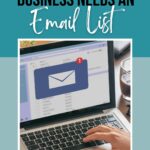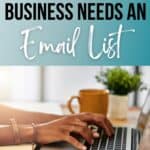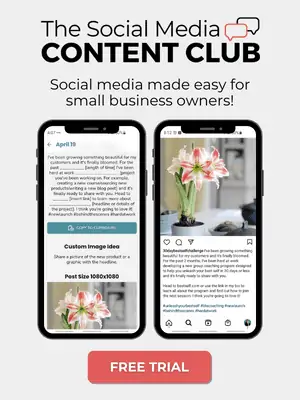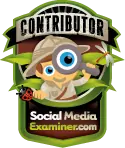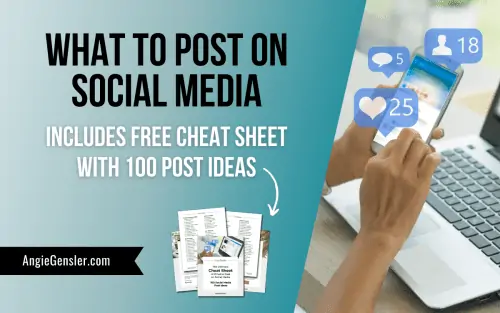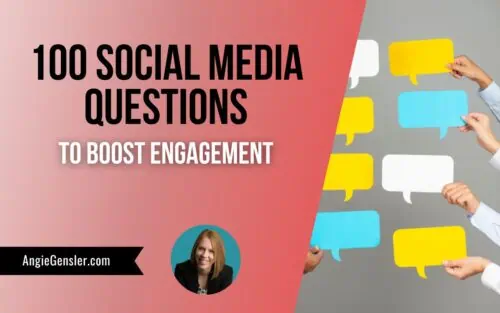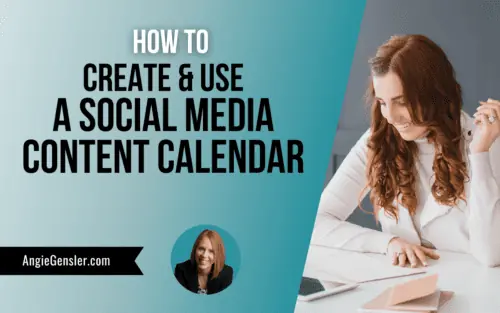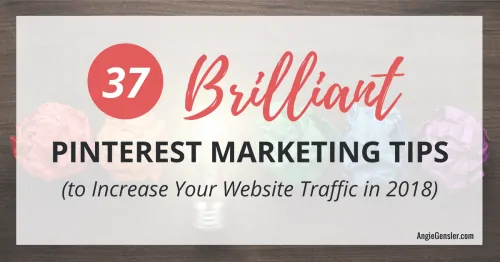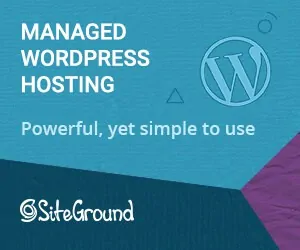Building an email list isn’t just an optional strategy—it’s essential for any business looking to thrive.
Whether you’re a small business owner, blogger, coach, or consultant, an email list is a powerful tool for long-term success.

I’ve consistently encountered small business owners who aren’t leveraging the power of email marketing, and it genuinely saddens me.
I know they could have a much more successful business if they did.
That’s why I’m writing this article—to hopefully convince more businesses to embrace email marketing.
Let’s dive into the five compelling reasons why you need an email list, along with detailed examples and stories that illustrate these points in action.
This article includes affiliate links. If you purchase using one of the links included in this post, I may receive a small commission. I only recommend products that I have personally used and stand behind to help your business succeed.
1. You Own the Contacts
When it comes to email marketing, one of the most significant advantages of an email list is that you own the contacts.
Unlike social media accounts like Facebook, where you lose your followers if your account gets shut down, your email list is yours to keep.
You don’t own your social media followers, but you do own your email mailing list.
This means that unlike social media platforms or other third-party channels, your email list is a direct connection to your audience that you control.
By owning these contacts, you can avoid the risk of losing touch with your audience if a platform changes its algorithms or policies.
This control allows you to tailor your messaging, frequency of communication, and overall strategy to best suit your subscribers’ needs and preferences.
In essence, owning your contacts gives you the power to cultivate and deepen relationships with your audience on your terms
Example: The Small Business Owner
Consider Sarah, a small boutique owner who primarily used social media marketing via Instagram to promote her clothing line.
She invested a lot of time and money into growing her follower base to 50,000.
One day, she woke up to find her account suspended due to a misunderstanding regarding a copyrighted image she had shared.
Despite her appeals, the account remained suspended, and she lost access to all her followers overnight.
Had Sarah focused on building a robust email list, she wouldn’t have lost touch with her customers.
By owning her contacts, she could have continued to promote her products directly to her customers’ inboxes.
Example: The Blogger
Take John, a travel blogger with a sizable following on his blog and social media.
One of his main platforms was Pinterest, where he shared his travel guides and tips.
After a change in Pinterest’s algorithm, his posts started getting less visibility, and his website traffic dropped by 60%.
Fortunately, John had been diligently list-building.
When his traffic dropped, he sent an email newsletter to his subscribers offering exclusive content and a special eBook.
This move not only regained some of his lost traffic but also reinforced the value of owning his contact list.
2. You Own the Distribution
Having an email list means you control how and when your messages are delivered – giving you direct communication with your audience.
Research shows that 90% of emails reach the intended recipient’s inbox, whereas only about 2% of your Facebook followers see your posts in their News Feed.
This is because Facebook limits the number of times your posts appear in the News Feed in an attempt to drive brands toward their paid advertising options.
This is a big deal when it comes to getting your messages in front of your desired audience.
Let’s say you’re running a special on one of your offers this weekend.
If you post about your special on Facebook and you have 10,000 fans, only about 200 of them will even have a chance of seeing it in their News Feed.
Alternatively, if you email that message to your 10,000 subscribers, about 9,000 of them will receive it in their inbox. Now, not all 9,000 will read it.
Research shows that most open rates are typically between 25 – 30%.
Obviously, this varies based on your industry and the nature of your business, but let’s say that about 2,500 of those 10,000 will read your message.
So, only 200 of your FB fans saw your message, but 2,500 or more saw your email. That’s pretty incredible!
Example: The Coach
Maria, a life coach, launched a new online course and wanted to reach as many potential customers as possible.
She had a robust following on Facebook, with 10,000 fans.
She posted about the course multiple times, but the engagement was disappointingly low.
Realizing the limitations of social media reach, Maria decided to focus on her email list.
With 8,000 subscribers, she sent out a series of email messages about the course.
Her email open rates averaged 35%, meaning about 2,800 people read her emails.
This resulted in a significantly higher conversion rate compared to her social media efforts.
Example: The Consultant
David, a marketing consultant, was running a limited-time promotion for his services.
He had 5,000 LinkedIn connections and 5,000 email subscribers.
He shared the promotion on LinkedIn and sent out an email campaign simultaneously.
While his LinkedIn post got around 100 engagements, his email campaign reached about 2,000 people, given his 40% open rate.
The result was clear: his email campaign drove more inquiries and higher conversion rates than his social media posts.

3. Higher Engagement and ROI
Emails not only reach more people but also engage them more effectively.
Email marketing boasts an average return on investment (ROI) of 3,800%. For every dollar spent, the average return is $38.
This is significantly higher than the average ROI for Facebook ads, which typically ranges from $2 to $3 if done well.
This is because email allows for more targeted and personalized communication with your audience, leading to increased engagement, conversion rates, and, ultimately, more sales.
With the ability to track open rates, click-through rates, and other metrics, you can easily measure the success of your email campaigns and make data-driven decisions to optimize your strategies for even better results.
This focus on personalized and targeted content can significantly boost your ROI and drive revenue for your business.
What’s even better is that you can get started with email marketing for $0.
The platform I use (MailerLite) is completely free until you hit 1,000 subscribers, and that gives you all the features you could need.
So, there is no risk with email marketing other than your time.
Example: The Fitness Coach
Emily, a fitness coach, invested in Facebook ads to promote her new fitness program.
Despite targeting her ads well, she found that her return on investment was low, with only a few sign-ups.
She decided to shift her focus to email marketing.
Using a lead magnet—a free guide to healthy eating—she grew her email list to 4,000 subscribers.
When she promoted her fitness program via email, she saw a 25% open rate and a significant increase in sign-ups, resulting in a much higher ROI compared to her Facebook ads.
Example: The Online Store Owner
Mark, who owns an online electronics store, regularly uses email marketing to announce sales and new products.
He analyzed his campaign data and found that his email marketing efforts were yielding a 4,000% ROI.
For every $100 spent on his email campaigns, he was making $4,000 in sales.
This high ROI convinced him to invest even more in email marketing, using segmentation and personalization to drive even better results.
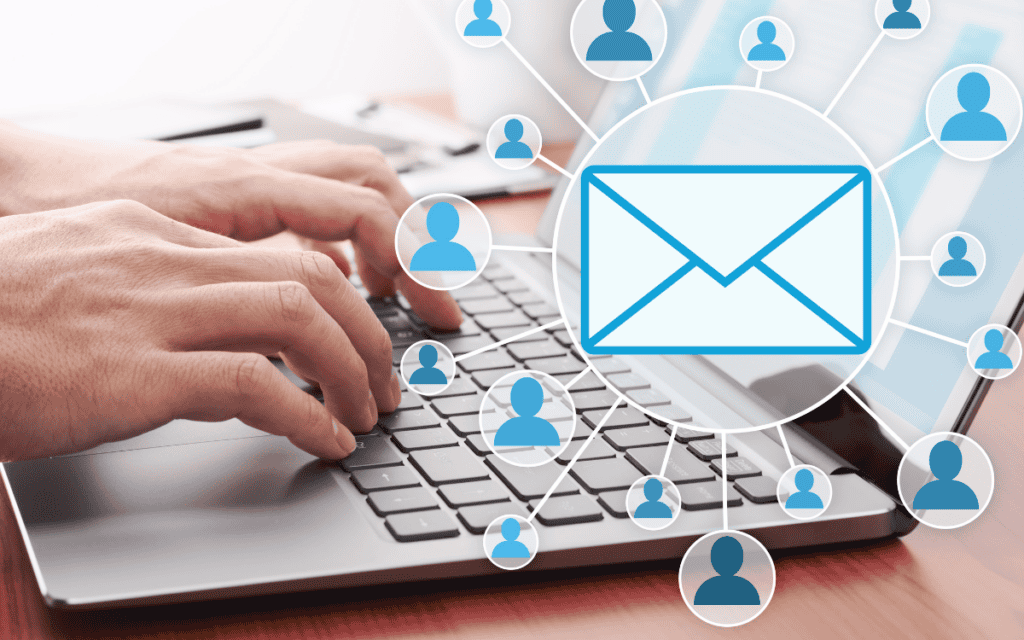
4. Ease of Automation and Personalization
One of the standout features of email marketing is the ease of automation.
Most email marketing services come with automation tools that allow you to set up sequences of emails that nurture new leads automatically.
Once set up, these sequences run on autopilot, saving you time and ensuring consistent communication with your subscribers.
Email marketing also offers robust personalization options.
Automation tools enable you to address subscribers by name and tailor content based on their interests or behaviors.
For instance, a fitness professional can send personalized content to men and women based on their specific fitness goals.
This level of personalization helps build stronger relationships with your audience and increases engagement.
Example: The Nutritionist
Lisa, a nutritionist, created a lead magnet—a free meal planning guide—to attract new subscribers.
She set up an automated email sequence that included a welcome email, followed by a series of emails offering additional tips, recipes, and, eventually, a special offer for her paid meal planning service.
This automated sequence ran seamlessly, nurturing her leads and converting them into paying clients without requiring much work.
For help creating a high-converting lead magnet, read: 60 Lead Magnet Ideas to Grow Your Email List.
Example: The SaaS Company
TechPro, a SaaS company, used email automation to onboard new users.
When someone signed up for their free trial, they received an automated sequence of emails that guided them through the setup process, highlighted key features, and provided tips on how to get the most out of the software.
This automation not only improved user experience but also increased the conversion rate from free trial to paid subscription by 30%.
Example: The E-commerce Store
Samantha runs an e-commerce store selling handmade jewelry.
By analyzing her subscribers’ behavior, she segmented her list into groups based on their purchase history and browsing behavior.
She sent personalized emails to each segment—promoting new arrivals to those who frequently bought new products, offering discounts to those who abandoned their carts, and sharing customer stories with those who engaged with her blog.
This personalization strategy significantly boosted her open rates, click-through rates, and sales.

5. Steady and Sustainable Revenue Stream
An email list can provide a reliable and sustainable revenue stream for your business.
By consistently delivering value and nurturing relationships with your subscribers, you create a loyal audience that is more likely to purchase from you.
Whether you’re launching a new product, promoting a service, or offering a special discount, your email list allows you to reach a receptive audience that trusts you and achieves your goal of business growth.
Example: The Real Estate Agent
Tom, a real estate agent, used his email list to share valuable content with his subscribers, including market updates, home-buying tips, and neighborhood guides.
When he had new listings or open houses, he sent emails to his list.
This consistent communication helped him build trust and establish himself as an authority in his market.
Over time, his email list became a steady source of leads, and many of his clients mentioned that they chose to work with him because of the helpful emails they received.
Example: The Course Creator
Jessica, an online course creator, launched multiple courses on digital marketing.
She used her email list to share valuable content, such as tips, case studies, and free webinars.
When she launched a new course, she sent a series of emails to her list, offering early access discounts and bonuses.
This strategy consistently generated significant revenue for her, with each course launch bringing in a steady stream of sales.
Best Practices for Building and Maintaining an Email List
Now that we’ve covered the top reasons why you need an email list let’s look at some best practices for building and maintaining one.
Use Effective Opt-In Forms
To grow your email list, you need to make it easy for people to subscribe.
Use opt-in forms on your website, blog, and social media pages. These forms should be simple and enticing.
Consider offering a lead magnet, such as a free eBook, checklist, or discount, to encourage sign-ups.
For help creating a high-converting lead magnet, read 60 Lead Magnet Ideas to Grow Your Email List.
Create a Compelling Landing Page
A dedicated landing page is a great way to collect email addresses.
This page should clearly explain the benefits of subscribing and include a strong call to action.
Personalize Your Email Content
Personalization goes beyond just using the subscriber’s name.
Segment your list based on interests, behavior, or demographics, and tailor your content accordingly.
Test and Optimize
A/B testing, or split testing, is essential for optimizing your email campaigns.
Test different subject lines and email content, and send times to see what works best for your audience.
Provide Value Consistently
Your emails should provide value to your subscribers.
Share useful information, exclusive offers, and relevant content that keeps your audience engaged and looking forward to your emails.
For a more detailed guide on how to perfect your email marketing strategy, read 24 Email Marketing Do’s and Don’ts.
It covers essential tips and common pitfalls to avoid, helping you refine your approach and achieve even better results with your email marketing efforts.
Conclusion
Building an email list is a crucial step for any small business owner, blogger, coach, or consultant.
It gives you complete control over your contact information and distribution, higher engagement rates, better ROI, and the ability to automate and personalize your communication.
Most importantly, it provides a steady and sustainable revenue stream that can weather external changes.
Start building your email list today and experience the transformative power it can bring to your business.
By focusing on these five key reasons and leveraging the examples and best practices provided, you can clearly see the profound impact an email list can have on your business’s success.
Don’t wait—start building your email list today and unlock the full potential of your business.
Disclaimer: The examples provided in this article are fictional and are based on hypothetical scenarios designed to illustrate key points. Any resemblance to actual persons or businesses is purely coincidental.

